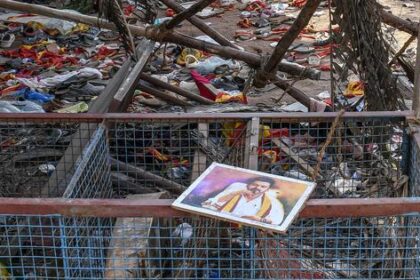Desai’s new novel intricately weaves themes of loneliness, identity, and connection across cultures.
Kiran Desai, who previously won the Booker Prize in 2006, has released a new novel titled The Loneliness of Sonia and Sunny, which spans nearly 700 pages. If she wins the award again this year, she will become the first Indian author to achieve this distinction twice. The novel presents a rich tapestry of interconnected narratives, drawing readers into a complex exploration of displacement and desire.
Desai constructs her narrative like a sprawling mansion, with various rooms filled with the voices of family members, the discord between lovers, and the haunting echoes of solitude. The characters navigate the complicated geography between East and West, grappling with their identities and relationships. The novel blends elements of a marriage plot with themes of trauma and recovery, while also addressing issues of class, gender, and the supernatural.
Set primarily between the late 1990s and early 2000s, the story begins with Sonia, a college student in Vermont, who struggles with profound despondency. Her affair with Ilan de Toorjen Foss, an older artist, reveals the complexities of love and consequence. Meanwhile, Sunny resides in New York, grappling with existential questions while maintaining connections to his family in India. Their grandparents, though not friends, decide to arrange a meeting between the two, which they initially resist.
The narrative unfolds as Sonia and Sunny encounter each other on a train to Allahabad, leading to a series of meetings and separations as they confront their pasts and future expectations. Desai enriches the story with a diverse cast of characters, including Sonia’s parents and Sunny’s mother, each with their own struggles and journeys. The settings of New Delhi, New York, and Vermont are expanded to include Goa, Landour, Venice, and Mexico, each described in vivid detail that reflects their influence on the characters.
As the plot progresses, coincidences and melodramatic events surface, including encounters with the underworld and supernatural elements such as spectral hounds. The narrative also engages with literary references, with Sonia reflecting on the complexity of storytelling, emphasizing that all narratives, regardless of genre, share a fundamental essence. This self-awareness about the act of writing adds another layer to the narrative.
Desai’s characters wrestle with the emotional weight of their experiences, and the novel examines broader themes related to cultural identity. Sunny’s observation about the challenges faced by Indian readers highlights the complex relationship between literature and personal experience. The author deftly critiques colonial stereotypes while presenting her characters’ internal struggles.
While comparisons to Vikram Seth’s A Suitable Boy may arise due to shared themes, Desai’s ambition diverges as she focuses on the intimate landscapes of loneliness and desire. The occasional references to significant historical events, such as the Babri Masjid demolition and 9/11, serve as contextual backdrops rather than central forces in shaping her characters’ lives. In essence, The Loneliness of Sonia and Sunny invites readers to traverse a world where realism and surrealism coexist, all anchored by a profound yearning for connection.








